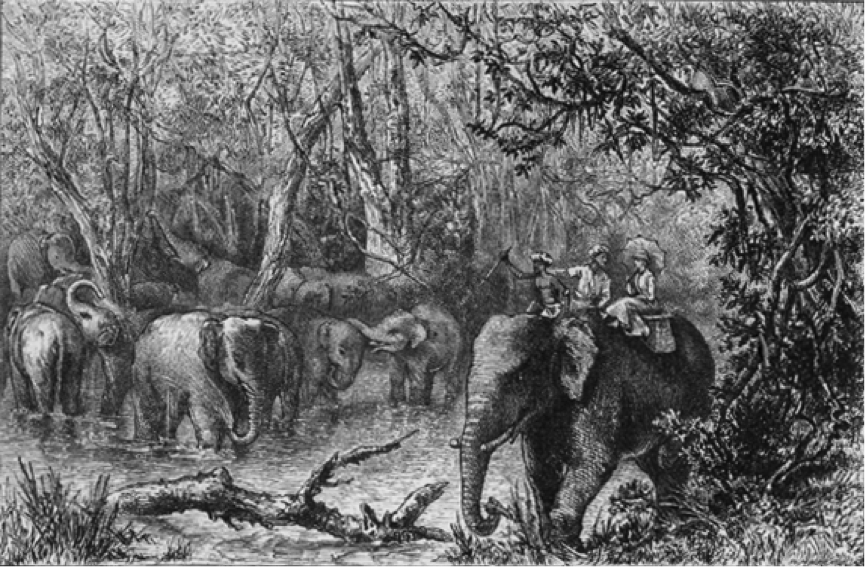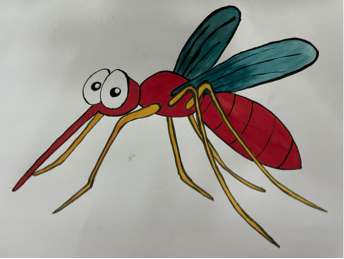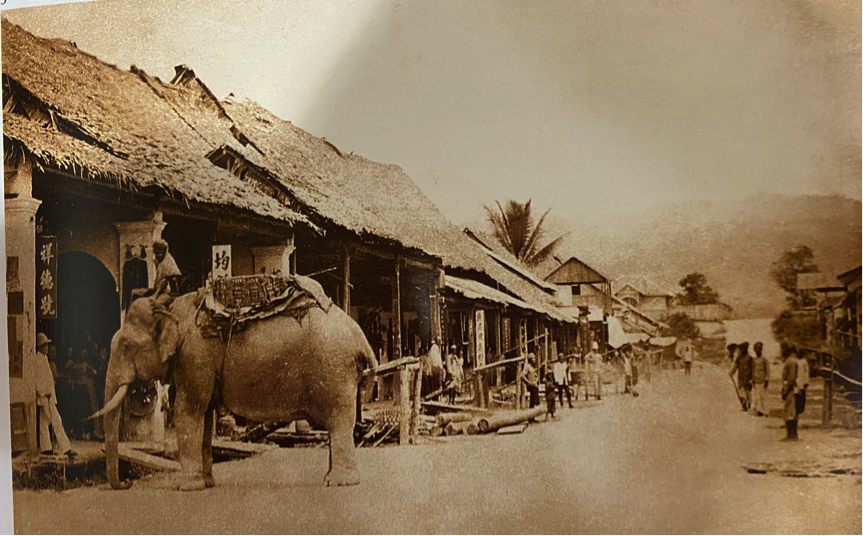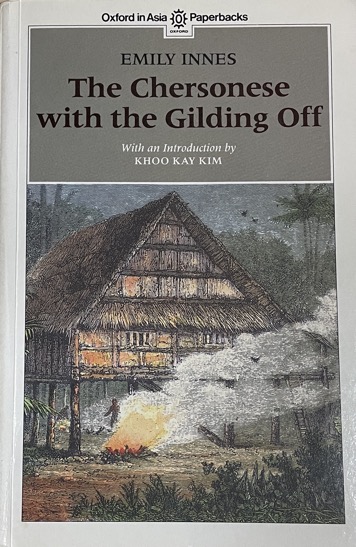Part Twenty: After Speedy
BLOG 20 - AFTER SPEEDY

After the departure of Captain Speedy, William Maxwell took over as Assistant Resident and he lived at the British Resident’s house in Taiping. Here Isabella stayed and wrote, “Mr Maxwell is most abstemious and is energetically at work from an early hour in the morning. There is a perpetual coming and going of Malays and an air of business without fuss.”
Isabella found the residence to be very plush. Not only did she have a bedroom and a sitting room, but also the sons of the exiled Sultan Abdullah had rooms there. Quite a number of the local Sultans and Rajas had their sons educated by the British, sometimes not exactly voluntarily, but often quite expensively!
“A large sum is being paid for their education at Malacca,” Isabella wrote, “They speak atrocious pidjun and never use Malayan in my hearing at least. They are never still for an instant; they chatter, read snatches from books, ask questions about everything, but are too volatile to care for the answers!”

The tall figure with the sikh troops is Captain Speedy
When Isabella visited, Captain Speedy's mercenary force had been handed over to Major Swinburne, of whom Captain Shaw in Melaka had forewarned Isabella. He told her, “When you see Paul Swinburne you'll see a man you'll not see twice in a lifetime." One is never quite sure whether this is complimenting the man, or just forewarning her that she would be meeting a very tough character.
Swinburne was aristocratic and brilliant, and refused to obey any orders from the Sultan. So there was no doubting his loyalties. He proceeded to train and reorganize the police. And between 1876 and 1878 he weeded out opium smokers, the diseased, and the bad characters that were part of Speedy's force.
Also he had new uniforms made for everyone, thus transforming a ragbag bunch into something more like a military force. But in 1879…

There was a mosquito with his name in it and he went the way of many a Brit too long in the mid-day sun, and fell ill and never really recovered. He retired in 1882 after having dealt with a Chinese siege of the Residency, which ended with twenty-eight Chinese being shot. That was obviously the preferred method of dealing with the Chinese in his day.

Lieutenant Colonel Robert Sandilands Frowd Walker
Today of one visits the local museum in Taiping, one finds a statue of Robert Sandilands Frowd Walker who took over the Armed Police as Swinburne faded away. He took a slightly less violent approach to rioting Chinese mobs, in that when confronted by one he ordered his men not to fire, then took out his own revolver and shot the ringleader and several others himself.
He was a sporting man and the local beauty spot, Taiping Lake Gardens, was much inspired by Walker. The dedication one can find there marking the park’s opening is signed by Walker and says how the park is there to promote sport.
This park was slightly different when Isabella arrived. She described it as, “Formerly tin mines, now full of muddy stagnant water, on narrow, muddy rivulets bearing the wash of the tin mines to the Larut river, on all the weediness and forlorness of a superficially exhausted mining region...”

Taiping Lake Gardens
Robert Sandilands Frowd Walker sorted that out! He had been, after all, a professional footballer! Or that is, as professional as one could be in the 1870's. He played for the Clapham Rovers Football club. And also played for England in a match against Scotland, scoring the winning goal. He was also captain of the Sandhurst cricket team, and a dab hand at hurdling and pole-jumping. He was what one might call, a bit of a jock. He also had a low opinion of the Chinese. He said they were, “A race that knows no repose, that settles only for the moment where money is to be made with the greatest ease, that would rob their best friends if they themselves should have lost their savings at the gaming table.”
The solution to this dissolute decadence was to be the park where all kinds of wholesome sporting activities could take place. However, the Chinese never quite got into cricket, unlike the Indians, or football, unlike the Malays. But the Chinese did take to the peddle boats and if you take to the lake yourself these days, you will find that many a Chinese keep up the tradition.

Peddle Boats on Taiping Lake
Taiping is essentially two towns. Speedy split the town between the Cantonese Ghee Hing and the Hakka Hai San, and one can still find something of that division nowadays, though perhaps not quite as warlike. Despite the Hai San and Ghee Hing being abolished by the British, the town has many buildings dedicated to various Chinese clans and associations. It also claims to be the “happiest” town in Malaysia! It is certainly situated in a pretty area, though picking one’s way about the open drains and broken up roads at night time might lead you into a less happy situation, and does indicate that perhaps this town has been neglected in recent years. Or as Isabella might say, it is somewhat “out of the running.”

Captain Speedy’s Central Market Place, Taiping
During Isabella’s time the town was on the up and up, but she did visit the Cantonese section, who had come off worse in the Larut Wars. She said, “We went on to Kamunting, a forlorn town, mainly built of attap, with roads and ditches needing much improvement, and I bargained for some Chinese purses and visited a gambling saloon...”
One does wonder who she went with?
Now, who was the gun toting, hairy chested, hunk of spunk that she might have gravitated towards? I will leave that for you to imagine. In the meantime, this is what she says she saw: “Each coolie takes his pipe of opium after his day's work, and each has a pot of tea kept always hot in a thickly wadded basket, a luxury which no Chinaman seems able to do without.”
Well, you won't see much in the way of opium nowadays; more likely you will see a vast supply of designer tea and coffee bars.

Kamunting high street
Similarly you will not see much in the way of tin mines nowadays, the town’s raison d’etre, but in Isabella’s time the mines were thriving and she went to inspect one, writing, “About four hundred lean, leathery looking men were working, swarming up out of the holes like ants in double columns.” All of which must have been a gratifying sight for her to see, her having an eye for tough men, but of course these were the opium raddled and fractious Chinese who were short on temper and quick to riot. Only the Sikh police officers stood between them and the nervous Brits.
That night Isabella bedded down early in preparation for her next journey, but awoke from a nightmare! She wrote:” “I awoke in a fright at two A.M. By the noise made in changing the guard, from a dream that the Sikhs had mutinied and were about to massacre the Europeans, myself included!”
Once again one asks, given the constant and very real chance of being killed in one's beds by the restless natives, who was benefitting from this Empire? Certainly the average British administrator sent to run the place appears not to have gained a great deal from it. Sultans, Capitan China’s, and Corporate Lawyers seem to have coined the greatest rewards.
The indentured Chinese labourers fates seem to have been quite mixed. Some made it rich, largely through rising in the ranks of the secret societies, but most, did not make it at all! Most sunk into opium fuelled hazes. Their prospects in China must have been very dismal to have driven them to take their chances in Malaya.



You can find these books either here:
https://www.amazon.co.uk/shop/malaysiantravels?isVisitor=true&listId=CJE56VEAVDSC
or here:
https://penangbookshelf.com/
All the quotations from Isabella’s book are by permission of the publisher.
If you are interested in finding out more for yourself, a great resource for researching these histories can be found at http://www.jstor.org
and the Singapore National Archives.
So, do not forget to SUBSCRIBE to the YouTube Channel where I shall announce each blog as it is posted. Also check out our other documentaries on The Hidden History of Johor Bahru and The Hidden History of Johor Lama. Those are documentaries that we actually finished!
And please come back here to continue reading the accounts of the various histories that we would have been covering in our documentary.
What I have done is that I have taken the script and turned it into various short blogs with various old photographs and illustrations.
If you haven't already, now watch the video and like, share, subscribe and hit the notification bell so that you can know when more videos are available. You might also like to subscribe to my twitter feed at: @LawrenceWGray where I notify you of any new blogs or even blogs about the vlogs or is that vlogs about blogs? And don't forget to have a look at www.helengray.net as well for even more information about Malaysia, among other places.
